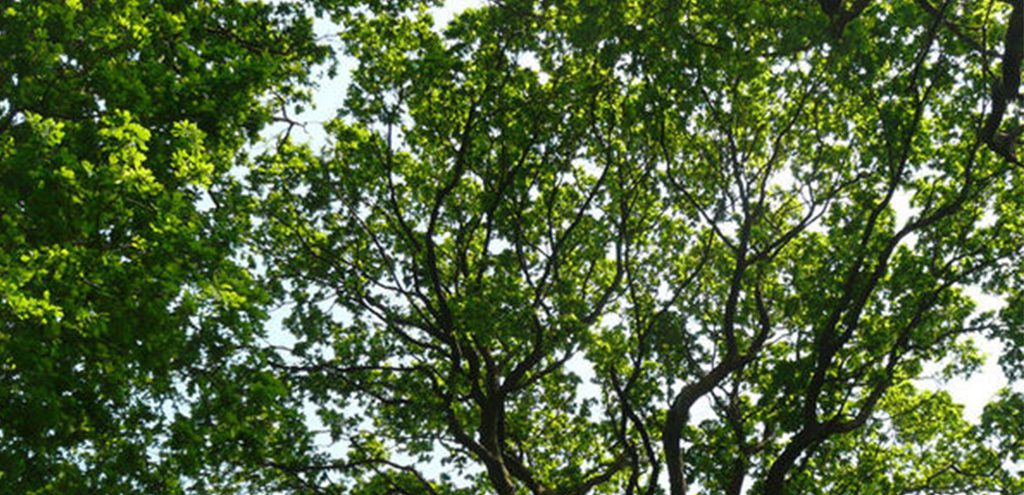
The United States of America is a unique, goofy place and Fourth of July seems to bring about a universal patriotic mood – especially in our Nation’s Capital! While eagles typically come to mind as the symbol of the States, did you know the U.S. has an official national tree? Only formally recognized in 2004 (!) Congress named the Oak tree as our national tree. No species, just the genus Quercus. To celebrating this stately tree, and our beloved country, we’re spending the month of July highlight Oak species prevalent in D.C. Next up is the Swamp White Oak, the most common oak we’ve identified through our Park Inventories!
In the urban forestry trade we sometimes ask ourselves, “what characterizes an urban ecosystem and what could we possibly consider ‘native’ to that ecosystem?” While our best guess is often to go with one of the many tree species that were historically native to this region, occasionally a tree jumps out at us that might actually be ‘adapted’ to urban conditions. The Swamp White Oak (Quercus bicolor) is just such a tree. Oak genetics are amazingly diverse and there seems to be an oak adapted for almost every situation. As the name suggests, the swamp white oak is adapted to moist sites like swamp and river edges. Some wet sites are associated with hardpan layers of clay and the modern swamp white oak has evolved a root system capable of dealing with these compacted soils.

Photo by Kyle Spradley | © 2014 – Curators of the University of Missouri
The Swamp White Oak is probably best characterized by one rare ecological community. Generally, swamps form at the lowest places on a site but occasionally bedrock or hardened clay layers form in a way to hold water on top of the hills. These sites are often characterized by being waterlogged for a portion of the year but becoming droughty in the rainless times of year. These are sometimes called ‘perched swamps’ and some contain almost pure strands of swamp white oak, a testament to this tree’s preference for and excellence in these sites. So what we have is a species adapted to swamps (which D.C. originally was) and compacted, clay soils that get droughty for part of the year. That sounds like a tree built for urban Washington, D.C. if you ask me and it has been proven as such. This is a tree that wants to grow in the conditions most trees abhor. Sounds perfect for an urban environment, right? Let us help you plant one for free through one of our residential planting programs.
But let me go on. The Swamp White Oak is also known in the arboricultural world as one of the oak species that is easiest to transplant, in part because it does not have a taproot, which most oaks have and generally must be severed when transplanting. And being an oak, this tree is long lived and will contribute to the urban canopy for centuries to come. The swamp white oak commonly reaches heights between 60 and 80 feet, though the record tree is 120 feet tall. Like most oaks, the tree has a spreading form that can extend broader than the tree is tall. True to being a member of the white oak (unofficial) sub-genus, the swamp white has rounded leaf margins, though more wavy than lobed. And the Latin name ‘bicolor’ refers to the dramatic difference in color between the dark green top of the leaf and the pale matte white underside. This tree grows naturally from the mid-Atlantic west towards the Missouri River Valley.
It’s not only landscapers, urban foresters and native-plant nuts that are enamored by the swamp white oak. Some farmers have taken to the tree too! Swamp white oak is known as one of the acorn-bearing oaks with the least tannins, meaning they are the sweetest and easiest to eat and digest. While all acorns can be specially soaked in water to remove the tannins, the swamp white oaks’ acorns need the least soaking or none at all. Cultures around the world once used acorns as a staple food. Most of them switched to grains as it was easier to regulate and predict their production. Today, there are pockets of the world that still include acorns in their diet, notably in Korea. Yet there is a movement afoot to bring acorns back here in North America. Plant breeders have begun the long, arduous but eternally rewarding work of developing production-grade cultivars of oaks – and swamp white is on the leading edge of that work. The rise of the acorn is part of a growing movement of support for perennial and tree-based agriculture. Ever considered making an acorn flour pancake?
Awarded the Society of Municipal Arborists’ 1998 Urban Tree of the Year and chosen as the single species to fill 412 planting spots at the National September 11th Memorial, it is clear that the Swamp White Oak has proven its potential in urban areas. It has the risk of getting lost in the crowd with all the other oaks but this is a tree worth noting! Keep a lookout for those two-toned leaves and know that you are looking at a tree that is more than happy to grow and flourish alongside us in this urban landscape of ours.
Editor’s note: We originally posted this Swamp White Oak profile in 2013 as part of our Tree of the Month series.
Check out all the other Oaks we’ve highlighted in July:
Round I: Willow Oak (the most common street tree oak)
Round II: Pin Oak (the second most common street tree oak)
Round III: Northern Red Oak (the third common street tree oak)

